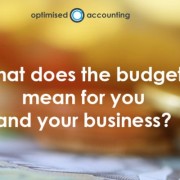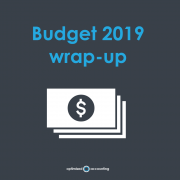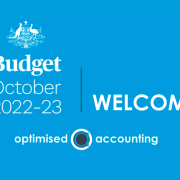
We know that the news can’t stop talking about both the fuel excise reduction, and a $250 payment – and with the price of fuel at the moment it’s no wonder.
This budget is designed to help short term cost of living pressures (and to help secure another term for Scott & Josh!)
On that, if the current government doesn’t remain in power after the May election, some of these changes may not become law.
EVERYONE
Temporary reduction in fuel excise
The government will half the excise on petrol and diesel, and all other fuel for 6 months from tomorrow.
Once this filters through the saving should be 24.31 cents per litre including GST.
Covid-19 tests are tax deductible
As this was announced earlier this year, all RATs purchased for work related purposes can be claimed.
Be sure to keep the receipts, a log on who in the family used the tests as well as some documentation surrounding your employers policy.
BUSINESSES
Skills and Training Boost – additional 20% deduction
(This means if you spend $100, you can deduct $120).
Small and medium sized businesses will be able to deduct an additional 20% of expenditure incurred on external training courses provided to their employees until 30th June 2024. The 20% boosted deduction will be claimed in the 2023 or 2024 financial year.
The deduction will be available to small business with an aggregated annual turnover of less than $50 million. External training courses will need to be provided to employees in Australia or online, and delivered by entities registered in Australia.
Some exclusions will apply, such as for in-house or on-the-job training and expenditure on external training courses for persons other than employees.
We assume there will need to be a nexus between the employee’s employment and the training program undertaken for the boost, although we are waiting on further details of this initiative to be released.
Technology Investment Boost – additional 20% deduction
(This means if you spend $100, you can deduct $120).
Small and medium sized businesses will be able to deduct an additional 20% of expenditure and depreciating assets that support their digital adoption (such as portable payment devices, cyber security systems or subscriptions to cloud based services such as Xero) until 30th June 2023. An annual cap applies each financial year of expenditure up to $100k. The 20% boosted deduction will be claimed in the 2023 or 2024 financial year.
The technology boost will be available to small business with an aggregated annual turnover of less than $50 million.
PAYG will now be based on current figures
The ATO are indexing PAYG instalments by 2% rather than using the old method which would have resulted in a ~10% uplift.
For our managed clients we will continue to calculate and adjust these instalments as appropriate for your specific situation.
The Government has announced that it will allow businesses to choose to have their pay as you go (PAYG) instalments calculated based on current financial performance, extracted from their business accounting software, subject to some tax adjustments.
- The Government will consult with affected stakeholders, tax practitioners and digital service providers to finalise the policy scope, design, and specifications of this measure.
- Proposed to commence on 1 January 2024 for periods starting on or after that date
Strengthening the ABN system
Currently, ABN holders can retain their ABN regardless of whether they are meeting their obligations to lodge income tax returns, or to update their ABN details on the Australian Business Register (ABR). The government has announced that:
- from 1 July 2021, ABN holders, with an income tax return obligation would be required to lodge their income tax return; and
- from 1 July 2022, ABN holders would be required to confirm annually the accuracy of their details on the ABR.
INDIVIDUALS & FAMILIES
Cost of living tax offset – LMITO increase by $420
If you already receive the low middle income tax offset (LMITO), there will be a once-off $420 offset which will be provided in the form of an increase to the existing LMITO. This will form part of your tax refund (or reduce your tax payable when you submit your 2022 return).
$250 cash payment
The Government will provide a one-off $250 cost of living payment to eligible recipients. The payment will be made in April 2022 to concession cardholders as well as eligible recipients of the following payments:
- Age Pension.
- Disability Support Pension.
- Parenting Payment.
- Carer Payment.
- Carer Allowance (if not in receipt of a primary income support payment).
- Jobseeker Payment.
- Youth Allowance.
- Austudy and Abstudy Living Allowance.
- Double Orphan Pension.
- Special Benefit.
- Farm Household Allowance.
- Pensioner Concession Card holders.
- Commonwealth Seniors Health Card holders.
- Eligible Veterans’ Affairs payment recipients and Veteran Gold cardholders.
The payments are exempt from tax and will not count as income support for the purposes of any income support payment.
Paid Parental Leave changes
Single parents will get an extra two weeks of government funded paid parental leave. The eligibility for households has also changed to include household earning up to $350K a year.
SUPERANNUATION
50% reduction of draw down rates extended to 30 June 2023.
This is to ensure retirees are not forced to sell their investments in a volatile market.
The Government has announced that the temporary reduction of the superannuation minimum drawdown requirements for account-based pensions and similar products will be extended for a further year to 30 June 2023.
The effect of the proposed extension of the temporary reduction to the 2022–23 income year is that the minimum pension drawdown rates for account-based pensions will be:
| Drawdown rates (5%) | ||
|---|---|---|
| Age | Default minumum | Rates for 2019–20, 2020–21, 2021–22 & 2022–23(proposed) |
| Under 65 | 4 | 2 |
| 65–74 | 5 | 2.5 |
| 75–79 | 6 | 3 |
| 80–84 | 7 | 3.5 |
| 85–89 | 9 | 4.5 |
| 90–94 | 11 | 5.5 |
| 95 or more | 14 | 7 |
OTHER ITEMS
Increasing the Medicare levy low-income thresholds from 1st July 2021
The Government will increase the Medicare levy low-income thresholds for seniors and pensioners, families and singles from 1 July 2021 as follows:
- The threshold for singles will be increased from $23,226 to $23,365.
- The family threshold will be increased from $39,167 to $39,402.
- For single seniors and pensioners, the threshold will be increased from $36,705 to $36,925.
- The family threshold for seniors and pensioners will be increased from $51,094 to $51,401.
For each dependent child or student, the family income thresholds will increase by a further $3,619 instead of the previous amount of $3,597.
Expansion to Home Guarantee Scheme
The Government will:
- expand the First Home Guarantee62 — to increase the available guarantees from 10,000 to 35,000 each year to support eligible first homebuyers to purchase a new or existing home with a deposit as low as five per cent — from 1 July 2022;
- establish a new Regional Home Guarantee — to provide 10,000 guarantees each year to support eligible homebuyers, including non-first home buyers and permanent residents who have not owned a home for five years to purchase or construct a new home in regional areas— from 1 October 2022 to 30 June 2025;
- expand the Family Home Guarantee — to provide 5,000 guarantees to support eligible single parents with children to buy their first home or to re-enter the housing market with a deposit of as little as two per cent — from 1 July 2022 to 30 June 2025.
Varying the GDP uplift factor for PAYG and GST Instalments
The Government has announced that it will set the GDP uplift factor for pay as you go (PAYG) and GST instalments at two per cent in respect of instalments that relate to the 2022–23 income year and fall due after the enabling legislation receives Royal Assent.
The two per cent GDP uplift rate — rather than the statutory 10 per cent — will apply to small to medium enterprises.
Employee Share Schemes – Expanding access and further reducing red tape
The Government has announced that it will expand access to employee share schemes (ESS) so that employees at all levels can participate in the scheme.
Participants of ESS in unlisted companies will be allowed to invest up to:
- $30,000 per participant per year, accruable for unexercised options for up to five years, plus 70 per cent of dividends and cash bonuses; or
- any amount, if it would allow them to immediately take advantage of a planned sale or listing of the company to sell their purchased interests at a profit.
The budget has not specified a date this will take effect.
Enhanced sharing of Payroll STP Data
As part of the 2022–23 Federal Budget, the Government announced that it will commit $6.6 million towards the development of IT infrastructure required to allow the ATO to share Single Touch Payroll (STP) data with State and Territory Revenue Offices on an ongoing basis.
The funding will be deployed following further consideration of which States and Territories are able and willing to make investments in their own systems and administrative processes to pre-fill payroll tax returns with STP data, to reduce compliance costs for businesses.
Reporting taxable payments (TPAR) at the same time as BAS
The Government has announced that — businesses will have the option to report Taxable Payments Reporting System data (via accounting software) on the same lodgement cycle as their BASs.
This option is expected to commence on 1 January 2024.
Digitising trust and beneficiary income reporting from 1 July 2024
Trust and beneficiary income reporting and processing will be digitalised with all trusts being provided with the option of lodging income tax returns electronically. While this measure will reduce compliance costs, it will also increase transparency and provide the ATO with a greater insight into where anomalies are occurring.
You already knew the news that would affect your business
We make sure what you need to know is in your inbox before it becomes urgent. Subscribe to our newsletter to be ahead of the curve:









